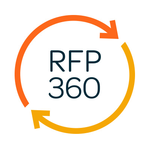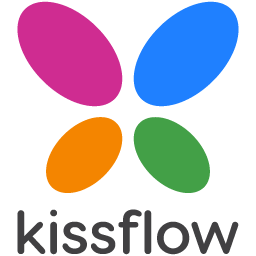Description

RFP360

SAP Ariba
Comprehensive Overview: RFP360 vs SAP Ariba
RFP360 Overview
Primary Functions and Target Markets: RFP360 is a comprehensive request management software designed to streamline and improve the process of receiving and responding to requests for proposals (RFPs), requests for information (RFIs), and other similar procurement and sales processes. The platform is built to benefit both issuers and responders by enhancing collaboration, reducing manual work, and improving decision-making efficiency.
-
Primary Functions:
- Creating, distributing, and managing RFPs.
- Collaborative response development.
- Evaluating proposals and managing vendor relationships.
- Integrating with APIs to enhance functionality.
-
Target Markets:
- Governments seeking efficiency in procurement processes.
- Enterprises across various sectors such as technology, healthcare, and finance.
- Organizations needing to manage complex procurement and bidding processes more effectively.
SAP Ariba Overview
Primary Functions and Target Markets: SAP Ariba is a leading cloud-based solution that facilitates a comprehensive suite of business commerce solutions across the procurement lifecycle. It extends its capability to source-to-pay processes, supply chain management, and provides a global business network for supplier-buyer relationships.
-
Primary Functions:
- Strategic sourcing and procurement.
- Supplier management and financial supply chain.
- Contract management and spend analysis.
- Supply chain collaboration and network-based purchasing.
-
Target Markets:
- Medium to large enterprises looking for integrated procurement solutions.
- International corporations requiring scalable global commerce platforms.
- Industries such as retail, manufacturing, and IT-driven companies focusing on expansive supply chains.
Comparison in Terms of Market Share and User Base
-
Market Share and Reach:
- SAP Ariba generally holds a larger market share due to its extensive functionalities and established presence as part of the SAP enterprise suite, appealing to large businesses requiring extensive integration across various business operations.
- RFP360, although smaller in scale, is gaining traction among organizations looking specifically for dedicated RFP management solutions that are less complex and more focused than large-scale procurement systems like SAP Ariba.
-
User Base:
- SAP Ariba typically serves larger entities with complex procurement networks and needs for seamless integration with other SAP modules.
- RFP360 is preferred by organizations seeking specialized solutions for RFP management without the necessity for broader ERP integrations, including small to medium enterprises and specialized departments within larger organizations.
Key Differentiating Factors
-
Functionality Scope:
- RFP360 specializes in simplifying RFP-related tasks, and its core focus is exclusively in this niche, providing a tailored approach to RFP management.
- SAP Ariba offers a comprehensive end-to-end solution that spans all procurement functions, from supply chain and spend management to contract and supplier relationship management.
-
Ease of Use and Implementation:
- RFP360 is noted for its user-friendly interface and faster implementation cycles, which make it accessible for teams without extensive IT support.
- SAP Ariba, being part of a larger SAP ecosystem, might require more time to implement and train users, given its complexity and robustness.
-
Scalability and Integration:
- SAP Ariba excels in scalability and integration capabilities, especially beneficial for organizations already using SAP ERP systems and looking for seamless ecosystems.
- RFP360, while fully functional for its dedicated purpose, may offer fewer integration points compared to SAP Ariba's extensive network.
Overall, the choice between RFP360 and SAP Ariba would depend significantly on the specific needs, size, and strategic objectives of an organization, balancing between specialized RFP management and comprehensive procurement solutions.
Contact Info

Year founded :
2012
+1 844-737-0365
Not Available
United States
http://www.linkedin.com/company/rfp365

Year founded :
1996
+49 6227 747474
Not Available
Germany
http://www.linkedin.com/company/ariba
Feature Similarity Breakdown: RFP360, SAP Ariba
When comparing RFP360 and SAP Ariba, two platforms often used for managing requests for proposals (RFPs) and procurement processes, it is important to examine both their similarities and differences. Below is a feature similarity breakdown:
a) Core Features in Common
-
RFP Management: Both platforms provide comprehensive tools for creating, managing, and responding to RFPs. They facilitate streamlined communication between buyers and suppliers throughout the RFP process.
-
Supplier Management: They offer features to store and manage supplier information, helping organizations maintain a centralized database of vendors.
-
Collaboration Tools: Both platforms support collaboration, enabling different stakeholders to work together seamlessly on proposals and procurement processes.
-
Analytics and Reporting: Each platform includes capabilities for generating reports and insights based on procurement activities, allowing users to analyze performance and make data-driven decisions.
-
Integration Capabilities: RFP360 and SAP Ariba can integrate with other enterprise systems, such as ERPs and CRMs, to enhance cross-platform functionality and data consistency.
-
Security and Compliance: Both platforms prioritize data security and compliance, providing features such as access control, data encryption, and adherence to industry standards.
b) User Interface Comparison
-
RFP360: Known for its user-friendly interface, RFP360 offers a straightforward and intuitive design that is relatively easy for new users to navigate. It emphasizes simplicity and usability, catering to organizations that may not have extensive IT resources.
-
SAP Ariba: As part of the broader SAP ecosystem, SAP Ariba offers a more complex and feature-rich interface, which might require a steeper learning curve. Its interface is designed to cater to large enterprises needing detailed customization and configuration options.
c) Unique Features
-
RFP360 Unique Features:
- Question and Answer Library: RFP360 provides a comprehensive Q&A library, allowing users to reuse content and speed up the process of responding to RFPs.
- Simplified Onboarding: The platform is generally easier to implement and requires less user training due to its straightforward design.
-
SAP Ariba Unique Features:
- Ariba Network: SAP Ariba boasts a large network of suppliers and buyers, facilitating extensive connectivity for businesses looking to expand their supply chain options.
- Advanced Spend Analysis: The platform provides detailed spend analysis tools, helping organizations optimize their procurement spend with more granularity.
- Inventory Collaboration: SAP Ariba offers features for inventory collaboration, enabling better management and planning of inventory levels in coordination with suppliers.
In summary, while RFP360 and SAP Ariba share many core functionalities, they cater to different user needs based on their interface design and unique features. RFP360 is often favored for its ease of use and quick implementation, while SAP Ariba stands out with its extensive network and advanced procurement capabilities more suitable for larger organizations.
Features

Proposal Management
Vendor Management
Performance Analytics

Supplier Management
Procurement
Invoice Management
Contract Management
Spend Management
Best Fit Use Cases: RFP360, SAP Ariba
RFP360 and SAP Ariba are both prominent solutions in the procurement and sourcing space, each catering to distinct use cases and excelling in different scenarios. Here's how they fit into various business contexts:
a) Best Fit Use Cases for RFP360:
-
Types of Businesses or Projects:
- Small to Medium-Sized Enterprises (SMEs): RFP360 is particularly well-suited for SMEs or businesses that are in the growth phase and do not require overly complex procurement systems. Its user-friendly interface and straightforward functionalities make it ideal for companies that are new to digital procurement solutions.
- Project-Based Organizations: Companies that often engage in project-specific procurement, such as marketing agencies, consulting firms, or construction companies, can benefit from RFP360’s clear and streamlined request for proposal processes.
- Niche Industries: RFP360 adapts well to industries where specialized procurement is needed, offering customizable templates and workflows that suit specific project requirements.
-
Industry Vertical Adaptation:
- Technology and Software Development: RFP360 provides flexible and intuitive tools for managing complex RFPs, which are common in tech and software projects.
- Construction and Engineering: Its ability to manage detailed and specific procurement requests supports project-specific sourcing common in these industries.
b) Preferred Scenarios for SAP Ariba:
-
Scenarios for Preference:
- Large Enterprises: SAP Ariba is designed to handle the scale and complexity required by large businesses, offering robust functionality to manage extensive supplier networks and global supply chains.
- Complex Supply Chains: Companies with intricate supply chains, such as those in manufacturing, pharmaceuticals, or retail, will find SAP Ariba's comprehensive suite advantageous.
- Integrated ERP Environments: Enterprises already using SAP’s ERP systems will benefit from the seamless integration capabilities of SAP Ariba, which can unify procurement with broader enterprise processes.
-
Industry Vertical Adaptation:
- Manufacturing and Industrial Sectors: SAP Ariba's strong analytics and supplier management tools help in optimizing large-scale production environments.
- Healthcare and Pharmaceuticals: Its compliance features support industries with stringent regulatory requirements.
- Retail and Consumer Goods: The platform can handle complex logistics and supplier diversity needs inherent in retail supply chains.
d) Catering to Different Industry Verticals or Company Sizes:
-
RFP360:
- Scalability for SMEs: Offers flexibility and ease of use for smaller organizations looking to digitize their procurement process without heavy investment in IT infrastructure.
- Customization for Specific Industries: The platform’s adaptability makes it a good choice for industries that need specific procurement solutions tailored to niche demands.
-
SAP Ariba:
- Sophistication for Large Corporations: Provides comprehensive tools designed to manage the complexities of diversified global operations, catering well to multinational and large-scale enterprises.
- Industry-Specific Solutions: SAP Ariba offers solutions and best practices tailored to various industries, leveraging SAP's industry expertise to provide added value.
In summary, RFP360 is ideal for businesses focusing on simplicity, flexibility, and project-specific procurements, particularly in small to medium-sized enterprises or niche markets. In contrast, SAP Ariba is best suited for large corporations with complex supply chains, particularly those already embedded within the SAP ecosystem, offering extensive integration and scalability across the enterprise.
Pricing

Pricing Not Available

Pricing Not Available
Metrics History
Metrics History
Comparing teamSize across companies
Conclusion & Final Verdict: RFP360 vs SAP Ariba
To provide a conclusive comparison and final verdict between RFP360 and SAP Ariba, let's evaluate them based on key considerations such as functionality, cost, user experience, integration capabilities, and scalability.
Conclusion and Final Verdict
a) Considering all factors, which product offers the best overall value?
When evaluating overall value, which includes features, ease of use, cost, support, and scalability, SAP Ariba tends to offer the best overall value for large enterprises with complex procurement needs. Its comprehensive suite of features supports extensive supply chain management and global procurement processes, making it an ideal choice for organizations looking for a fully integrated system.
However, for small to medium-sized businesses or organizations that primarily need a straightforward and efficient RFP management solution, RFP360 may offer better value due to its more focused feature set, ease of use, and cost-effectiveness.
b) Pros and Cons of Choosing Each Product
RFP360:
Pros:
- User-Friendly Interface: RFP360 is known for its intuitive and straightforward user interface, which reduces the learning curve for new users.
- Focused Functionality: It excels in RFP management, providing specialized features for creating, collaborating on, and evaluating RFPs.
- Cost-Effective: Generally more affordable than SAP Ariba, making it a good choice for smaller businesses with limited budgets.
- Quick Implementation: The implementation process is relatively faster, allowing organizations to transition smoothly and without extensive resource allocation.
Cons:
- Limited Integration: RFP360 may not offer as broad integration capabilities with other enterprise systems compared to SAP Ariba.
- Scalability Concerns: For very large enterprises, RFP360 might lack the breadth of features required to handle complex procurement processes.
- Less Comprehensive: It doesn’t provide the full suite of procurement solutions that a larger platform like SAP Ariba offers.
SAP Ariba:
Pros:
- Comprehensive Suite: Offers an end-to-end procurement solution covering sourcing, contract management, supplier management, and spend analysis.
- Global Network and Integration: Provides robust integration capabilities with various ERP systems, enhancing its utility for large multinational corporations.
- Scalable: Suitable for enterprises of all sizes, especially those with complex procurement and supply chain needs.
- Advanced Analytics: Offers deep insights and data analytics potential, which can drive strategic decision-making and improve procurement outcomes.
Cons:
- Complexity: The platform’s extensive features might be overwhelming for smaller organizations or those with simpler needs.
- Cost: Typically more expensive than RFP360, both in terms of licensing and overall implementation/maintenance costs.
- Steeper Learning Curve: Employees may require more time and resources to become proficient in using the system effectively.
c) Recommendations for Users Deciding Between RFP360 vs SAP Ariba
-
Assess Your Organization’s Needs: Consider the scale and complexity of your procurement processes. If you need a complete procurement system with advanced features and integrations, SAP Ariba is likely the better choice. However, if you are focused mainly on RFP management with a tighter budget, RFP360 could provide a more tailored fit.
-
Budget Considerations: Evaluate the total cost of ownership, including implementation, training, and maintenance. RFP360 is more budget-friendly, whereas SAP Ariba could require significant investment that pays off in larger, more complex environments.
-
Integration Requirements: If your organization already uses an ERP system or other enterprise solutions, check the compatibility and integration capabilities of each tool to ensure seamless operation.
-
Future Growth and Scalability: Consider your organization’s growth plans. If you expect to scale operations significantly, SAP Ariba may offer the necessary scalable features that grow with your business.
Making the right choice involves weighing these factors against your organization's specific context and priorities. Engage key stakeholders in the decision-making process to align the purchase with strategic goals.
Add to compare
Add similar companies



